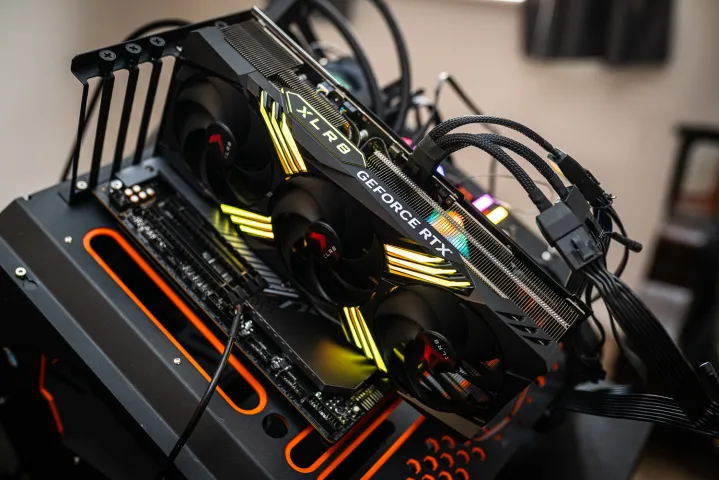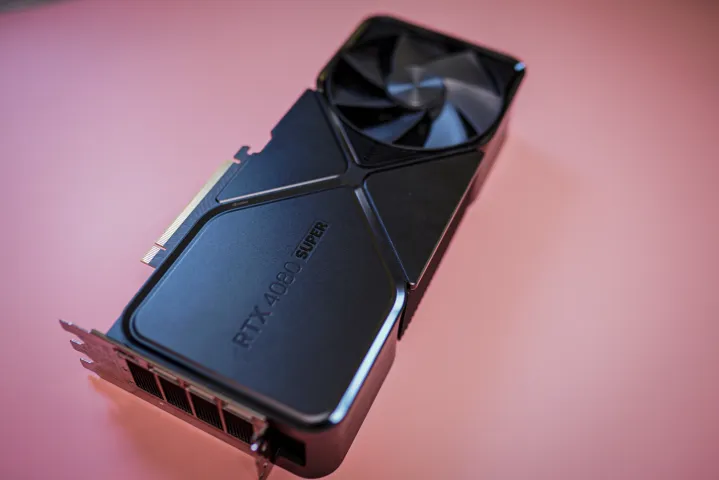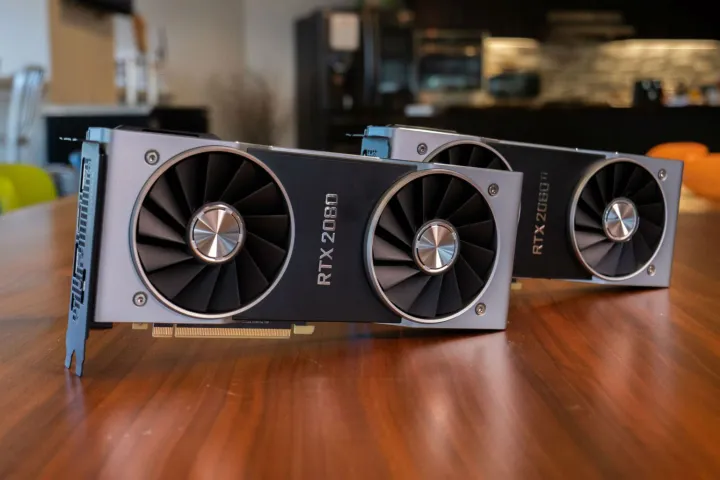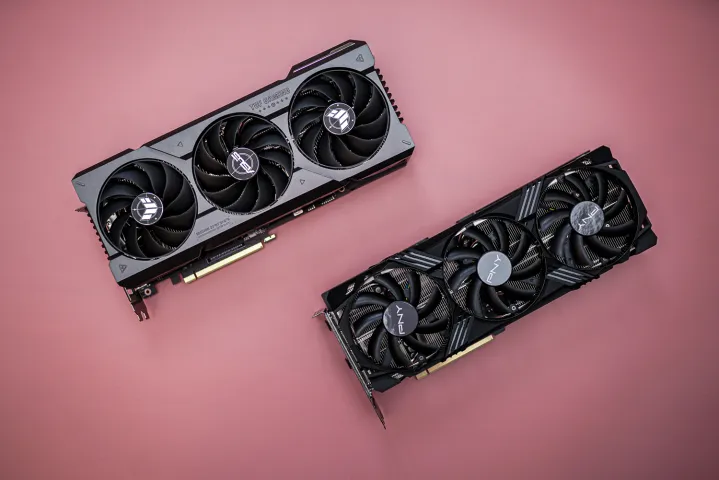
I won’t lie — I was pretty scared of Nvidia’s RTX 50-series, and I stand by the opinion that those fears were valid. They didn’t come out of thin air; they were fueled by Nvidia’s approach to GPU pricing and value for the money.
However, the RTX 40 Super refresh is a step in the right direction, and it’s one I never expected to happen. Nvidia’s most recent choices show that it may have learned an important lesson, and that’s good news for future generations of graphics cards.
The price of performance
Nvidia really didn’t hold back in the RTX 40 series. It introduced some of the best graphics cards we’ve seen in a while, but raw performance isn’t the only thing to consider when estimating the value of a GPU. The price is the second major factor and weighing it against performance can often tip the scales from “great” to “disappointing.” That was the case with several GPUs in the Ada generation.
Let’s take the RTX 4070 Ti, for instance. The GPU could (or even should) have had more memory and perhaps more CUDA cores, but those problems wouldn’t have been as much of an issue if it was cheaper. With a $800 price tag, it was too expensive for the kind of performance it was able to provide.
The RTX 4080 was in the same, or even worse, position. A powerful GPU in its own right, capable of tackling pretty much every game at 4K, it was doomed from the start and dubbed the worst-value GPU of the year. It was priced at $1,200, so that sentiment was completely valid.

Things don’t get better as we move down the product stack. The RTX 4070 was excellent, but all three versions of the RTX 4060 were a letdown. Performance, VRAM, and questionable pricing all came together to create three fairly “meh” GPU releases.
Atop the lineup sits the impressive RTX 4090. While it was outrageously expensive at launch, it’s even pricier now, but considering the generational leap between the RTX 4090 and its predecessor, that price made a lot more sense than some of the other choices Nvidia made this generation.
With a lineup of impressive GPUs where each had something that could use improvement, Nvidia had a lot to make up for. Personally, I felt disillusioned and didn’t believe that it would take any steps to fix the sorry state of the RTX 40-series.
And then, Nvidia decided to prove me wrong.
How Nvidia says ‘sorry’

The RTX 40 Super refresh added three more GPUs to the lineup: the RTX 4070 Super, the RTX 4070 Ti Super, and the RTX 4080 Super. Early rumors revealed the specs of each GPU way ahead of time, so technically, we knew what was coming.
The RTX 4070 Super received a substantial boost in CUDA core counts. The RTX 4070 Ti Super, on the other hand, addressed the major problem many people had with the base model — a lack of VRAM. Now, the Super version serves up 16GB of VRAM and an appropriate memory interface. Coming in last, the RTX 4080 was the big enigma prior to the release. With a barely visible spec upgrade, the GPU was destined to be a sidegrade and a clone of the RTX 4080.
Again, performance is one thing. The prices remained secret until right before the launch, and I fully expected Nvidia to price all of these cards higher, just on the basis of them being “Super.”
Boy, was I in for a shock.
| RTX 4070 Super | RTX 4070 Ti Super | RTX 4080 Super | |
| CUDA cores | 7,168 | 8,448 | 10,240 |
| Boost clock | 2,475MHz | 2,610MHz | 2,505MHz |
| Memory | 12GB GDDR6X | 16GB GDDR6X | 16GB GDDR6X |
| Memory speed | 21 Gbps | 21 Gbps | 23 Gbps |
| Memory bus | 192-bit | 256-bit | 256-bit |
| TDP | 220W | 290W | 320W |
| Price | $600 | $800 | $1,000 |
Instead of yet another instance of Nvidia ignoring the important aspect of performance-per-dollar, we got two cards with a noticeable bump in performance, and the RTX 4080 Super with a shocking price cut. That was all that it needed to become a great GPU.
For once, the outcry of consumers that was heard across various social media platforms was listened to. Nvidia addressed the main issues we’ve had with the RTX 4070 Ti (poor performance for the money and low VRAM) and the RTX 4080 (terrible value). The RTX 4070 Super was great to begin with, and now, it’s even better, all at the same price.
This is a rare instance of a “win-win” across the board, and while the cards could stand to be even cheaper, it’s important to acknowledge that Nvidia consciously strayed from the words of its CEO, Jensen Huang, who said that falling chip prices are “a story of the past.”
This is a big deal, but it’s also not the first time that Nvidia decided to say “sorry” by fixing its past mistakes in the very same generation of GPUs.
Not the first Super

Nvidia’s no stranger to having to apologize and fix mistakes that didn’t go over well with its customer base. The RTX 20-series Super refresh was similar to what we got in this generation.
Months after the launch of the RTX 2060, RTX 2070, and the RTX 2080, Nvidia turned around and decided to improve what went wrong. The Super versions came in at the same (or slightly higher) price points, but with an improvement in specs. Sounds familiar, right?
However, the specification bump wasn’t massive enough to make much of a splash. The RTX 2080 Super was only a few percent faster than its predecessor, while the 2060 Super and the 2070 Super saw bigger gains in the ballpark of 10% to 15%. Of course, their prices were lower to begin with than what we’re dealing with these days; an RTX 4080 priced at $700 would have been a killer GPU.
On the surface, not much is different between the RTX 20-series refresh and the one we’re observing this time around. The older GPUs will mostly be phased out in favor of their superpowered counterparts, and the market is better off with more GPUs up for grabs while both types are still up for sale. The launch of the refresh was timely, giving Nvidia something new to talk about before it’s ready to launch the RTX 50 series.
However, this time around, the refresh feels significant. Given its pricing strategy for the RTX 30-series and the RTX 40-series, Nvidia could have just done the same thing and slapped a higher price on each GPU. Sure, many people would be disappointed, but hey, it’s Nvidia — people would still buy it. (Case in point: myself. I bought the RTX 4080 last year.)
We could have gotten the RTX 4070 Ti Super with more CUDAs, but the same VRAM at $900, or the RTX 4080 Super with barely any improvements and a $1,300 price tag. We didn’t.
What does this mean for Nvidia’s next-gen cards?
The GPU landscape is changing

For the first time in months, I’m feeling hopeful. After all, it was never the rumored performance of the Blackwell generation that worried me; it was always the fact that I didn’t believe Nvidia still cared to listen to feedback. However, the RTX 40 series Super refresh tells me otherwise.
Could it be a one-off? Maybe. But it’s hard not to notice that the consumer market may slowly be reaching the limit of how far most people are willing to go when building a new PC. The prices can only go up so high before people turn to cheaper options, be it entry-level GPUs, consoles, or portables like the Asus ROG Ally. The latter wouldn’t be a great solution for Nvidia, seeing as it still hasn’t dipped its fingers into the pot of gold that the budding gaming handheld market appears to be.
Now that Nvidia has shown us that it’s possible, I’m hoping that the RTX 50 series will expand on that. Give us slightly better value and GPU configurations that make sense — so, not something like the RTX 4060 Ti with 16GB of VRAM and a 128-bit bus. Instead, let us get an RTX 5070 that starts at $600 and outpaces the RTX 4070 Ti, or an RTX 5080 that either boosts the performance or knocks down the price. Maybe down to $900? One can dream, but realistically, I’ll be happy if it stays at $1,000.
Without a crystal ball, it’s impossible to know what Nvidia will do next. It might do the same thing as the previous time it released a mid-gen refresh — revert back to its old ways and put our wallets through the wringer with overpriced GPUs. That approach would, undoubtedly, have AMD rubbing its hands together in anticipation of some easy profits in the midrange segment where gamers are likelier to choose value over performance.
The thing is, Nvidia can’t keep doing the same thing forever and hoping for a different outcome. The reception of the RTX 40-series showed the tech giant that just slapping a Nvidia logo onto a product won’t always be enough for it to sell. Let’s hope that it’ll carry that lesson on to the next generation and deliver better value with the RTX 50 series in 2025.




